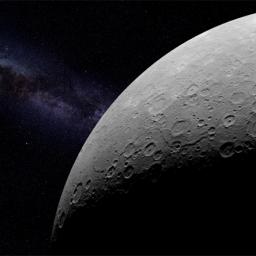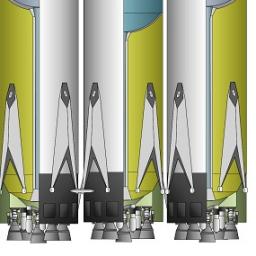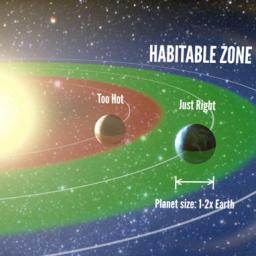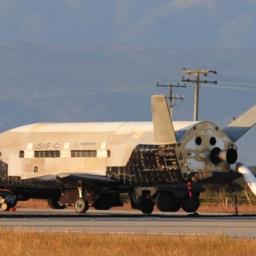 Phys.org reports
Phys.org reports :
A robotic space plane is speeding in low Earth orbit at this very moment. Some say it's a weapon; others, a data-gathering mission. There's one fact most agree on as the plane hits 500 days in space: Its real purpose is a mystery.
The Boeing-built X-37B Orbital Space Vehicle, constructed in California, is one-fourth the size of the Endeavour Space Shuttle.
Whatever its real purpose, the X-37B has very real capabilities. It travels low in orbit, staying around 110 to 500 miles above the Earth at a cruising speed of about 17,500 mph. It's equipped with special heat-shield tiles for re-entry, which are billed by Boeing as tougher than Endeavour's.
But the government's treatment of the project poses questions. Though it's advertised as a secret project, Boeing releases pictures and more than two pages of details on the X-37B. In contrast, the secret, super-fast Lockheed SR-71 Blackbird was not declassified until decades after it had been used in the Vietnam War.
More pictures and speculation can be found at
Extremetech .
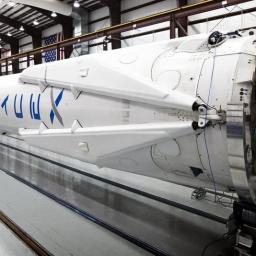
Here are some of the highlights from the latest resupply mission by SpaceX to the ISS:
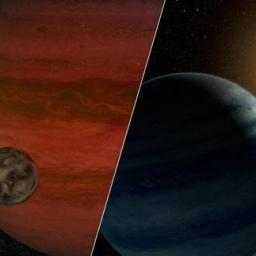
New Scientist, on authority of NASA's Jet Propulsion Laboratory, reports that the
first moon outside of our solar system may have been discovered.
It is not yet clear what double object
MOA-2011-BLG-262 is: it may be a rogue planet with a massive moon about 1800 light years from Earth, or a faint star (brown or red dwarf) with a Neptune-sized planet much further away.
The discovery was made by telescopes in New Zealand and Tasmania during a micro-lensing event in 2011. Since the micro-lensing event is over and we don't know the distance of the double object, we cannot distinguish between both possibilities.
(The discovery was published late 2013, but it is
making mainstream news now .)
[Cross-posted to SoylentNews]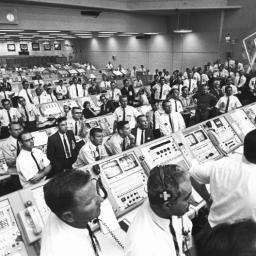 Today (April 10th)
Today (April 10th) , NASA released over 1000 projects as open source in a
searchable database .
NASA already released the
source code and schematics of the Apollo 11 Guidance Computer, Command Module (codenamed Comanche054) and the Lunar Module (Luminary099) on July 20th, 2009; the 40th anniversary of the first moon landing.
In February of this year,
DARPA published a similar catalog. Both code databases are the result of a 2011 order from President Barack Obama that federal agencies increase the pace of technology transfer.
(Cross-submitted to SoylentNews)
Servers need energy and cooling, and outer space has quite a bit of clean solar power and of course low enough temperatures to keep equipment cool for a long time. Does that give you any ideas? It certainly
inspired the folks at server-sky , who are working on the specs for an array of orbiting servers, transferring computation to where it's potentially cheap and using it to serve the needs of the underserved on earth.
Server Sky thinsats are ultralight aluminum foil substrates that convert sunlight into computation and communications. Powered by solar cells, propelled and steered by light pressure, networked and located by microwaves, and cooled by radiation into deep pace. Arrays of tens of thousands of thinsats act as highly redundant computation and database servers, as well as phased array antennas to reach thousands of transceivers on the ground.
First generation Version 5 thinsats are 20 centimeters across (about 8 inches) and 0.04 millimeters (40 microns) thick, and weigh 3 grams. They can be mass produced with off-the-shelf semiconductor and display technologies. Thousands of radio chips provide intra-array, inter-array, and ground communication, as well as precise location information. Thinsats are launched stacked by the thousands in solid cylinders, shrouded and vibration isolated inside a traditional satellite bus."
Of course when they gain sentience and turn against us by blocking out the sun,
then we'll be sorry.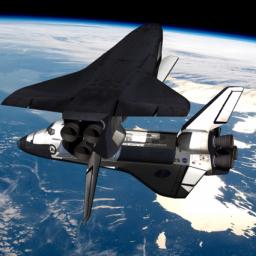
Ars Technica writer
Lee Hutchinson , who worked for NASA during the
Columbia incident , writes about the 2003 destruction of the shuttle Columbia, and the questions asked afterwards. Could the disaster have been anticipated? If so, could a rescue have been performed before the shuttle's incredibly destructive re-entry? The answers to those questions hatched an incredible plan - and changed the way NASA handles shuttle missions to this day. It's worth a read not only for the historical perspective, but also for the account of practical project planning and the immense scope of such an endeavor. He calls it
the untold story of the rescue mission that could have been NASA's finest hour .
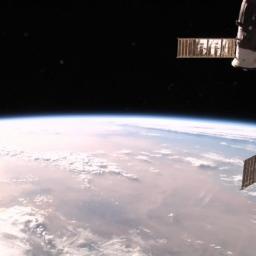 Extremetech reports :
Extremetech reports :



